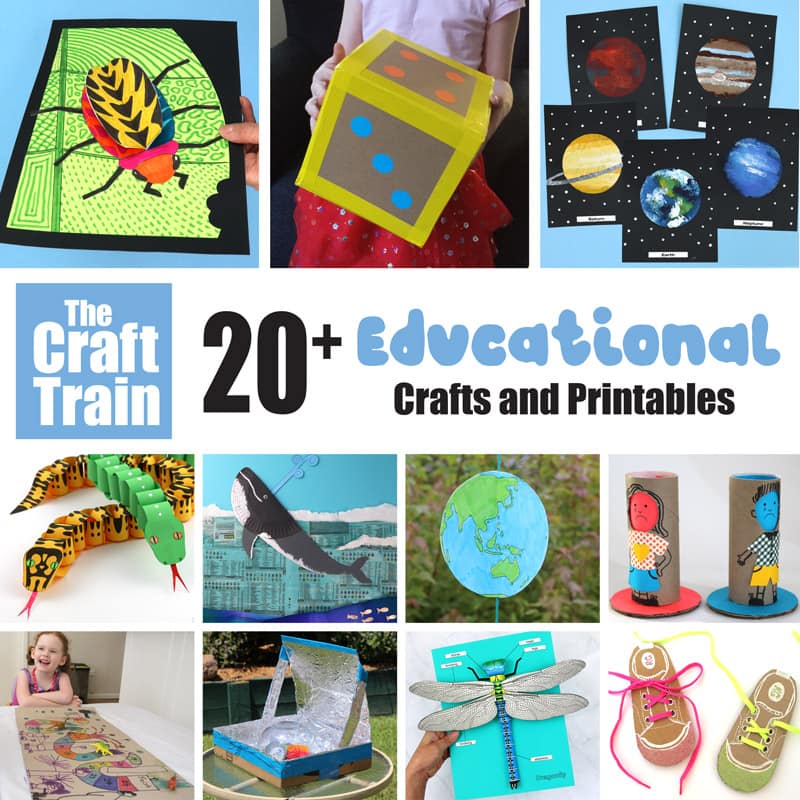Are you looking for creative and educational activities to keep your children engaged and entertained? Look no further! “Get Crafty: Fun and Educational DIY Projects for Children” is here to provide you with a plethora of family-friendly crafting ideas that will not only spark your child’s imagination but also foster a strong bond between you and your little ones. With these DIY projects, you can turn ordinary household items into extraordinary masterpieces, all while having a blast and learning together. From recycled art to homemade science experiments, get ready to embark on a crafting journey filled with fun, laughter, and endless possibilities. Let’s get crafty!
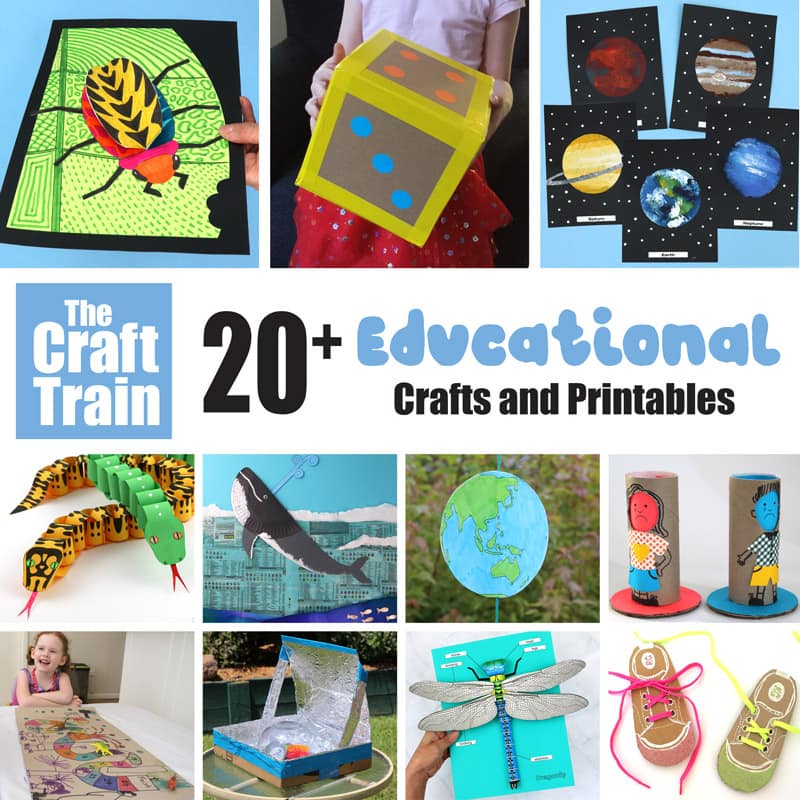
1. Paper Crafts
1.1 Origami
Origami is the art of paper folding, and it can be a fun and engaging activity for children of all ages. With just a sheet of paper, you can create a wide variety of shapes and figures, from animals to objects and even intricate designs. The best part about origami is that it requires minimal materials and can be done anywhere, making it a perfect craft for rainy days or long car rides. Not only does origami enhance your child’s fine motor skills and hand-eye coordination, but it also encourages patience and problem-solving as they follow step-by-step instructions to transform a flat piece of paper into a three-dimensional masterpiece.
1.2 Paper Mache
Paper mache is a versatile craft that allows kids to mold and sculpt with strips of paper and a paste made from water and flour or glue. This technique can be used to create a variety of objects, such as masks, piñatas, and even sculptures. Paper mache crafts offer endless possibilities for creativity, as children can design and decorate their creations with paint, glitter, and other embellishments. Aside from being a fun and messy activity, paper mache also helps develop hand strength and coordination as kids manipulate the strips of paper and shape them into their desired form.
1.3 Paper Collage
Paper collage is a fantastic craft that utilizes different types of paper and materials to create unique and visually appealing artworks. Kids can express their creativity by cutting, tearing, and arranging various papers, such as colored construction paper, magazines, and tissue paper, onto a base surface. They can create vibrant landscapes, abstract designs, or even portraits using this technique. Paper collage encourages children to explore color, texture, and composition while also enhancing their fine motor skills and creativity. It’s a great way for children to experiment with different materials and learn how to arrange them to create a cohesive and visually appealing composition.
2. Painting and Drawing
2.1 Finger Painting
Finger painting is a classic activity that allows children to explore colors and textures using their hands as brushes. This sensory experience engages their senses and promotes self-expression and creativity. All you need is some non-toxic finger paint and a large sheet of paper or a finger painting pad. Children can dip their fingers into the paint and use them to create bold strokes, patterns, or even handprints. Finger painting is a fantastic way for young children to develop fine motor skills, hand-eye coordination, and sensory awareness.
2.2 Watercolor Painting
Watercolor painting is a versatile and exciting medium that encourages experimentation and creativity. With a brush and watercolor paints, children can explore different techniques, such as wet-on-wet, dry brush, and layering, to create beautiful and unique artworks. Watercolors allow for a wide range of effects, from vibrant and translucent washes to delicate and detailed paintings. This craft also helps develop patience, focus, and attention to detail as children learn to control the flow of water and paint on the paper. Watercolor painting is a wonderful way to introduce children to the world of art and let their imagination run wild.
2.3 Tie-Dyeing
Tie-dyeing is a fun and trendy craft that has been enjoyed by kids and adults alike for generations. With just a plain white t-shirt or any other fabric item, some fabric dye, and rubber bands, children can create vibrant and eye-catching patterns. The process involves twisting, folding, and securing the fabric with rubber bands before applying the dye. After allowing the dye to set, the fabric is rinsed and dried, revealing a unique and colorful design. Tie-dyeing not only allows children to experiment with color mixing and pattern creation but also teaches them about the concept of absorption and how different fabrics react to dyes.
2.4 Nature Sketching
Nature sketching is a wonderful way for children to connect with the outdoors and observe the beauty of the natural world around them. All you need is a sketchbook or some drawing paper, pencils, and a comfortable spot in nature. Encourage your child to choose a subject, such as a tree, flower, or insect, and spend some time observing its shape, texture, and details. They can then try to capture the essence of the subject through their sketches. Nature sketching promotes mindfulness, patience, and an appreciation for the environment. It also helps develop observational skills, hand-eye coordination, and fine motor skills.
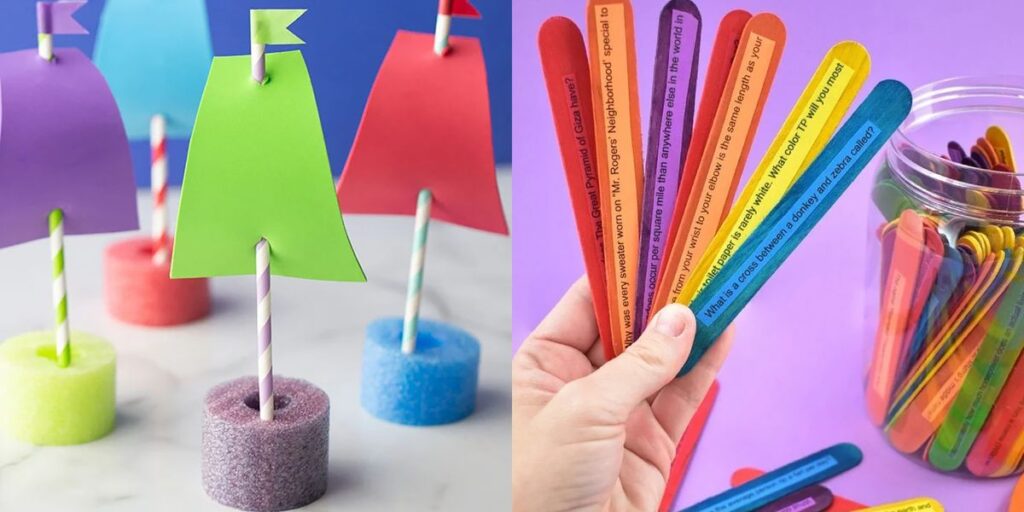
3. Recycled Crafts
3.1 Bottle Cap Creations
Bottle cap creations are a fantastic way to repurpose and recycle plastic bottle caps. With some glue, paint, and other craft materials, children can transform these humble caps into artful creations. They can create magnets, jewelry, or even use them to decorate picture frames or homemade cards. Bottle cap crafts promote creativity, resourcefulness, and environmental awareness. By reusing materials that would otherwise end up in the landfill, children learn the importance of recycling and reducing waste in a fun and creative way.
3.2 Egg Carton Crafts
Egg carton crafts are not only a great way to recycle cardboard egg cartons but also an opportunity for children to unleash their creativity. Egg cartons can be transformed into a wide range of crafts, including caterpillars, flowers, animals, and even boats. Kids can cut, paint, and decorate the cartons to bring their imagination to life. Egg carton crafts help develop fine motor skills, hand-eye coordination, and problem-solving abilities. They also teach children about the value of repurposing materials and finding creative uses for items that might otherwise be discarded.
3.3 Cardboard Sculptures
Cardboard sculptures are a fantastic way for kids to explore their engineering skills and create three-dimensional masterpieces using cardboard as their main medium. Children can collect old cardboard boxes and use them to build structures such as houses, castles, or even their very own robot. With some scissors, glue, and paint, they can bring their visions to life. Cardboard sculptures foster creativity, spatial awareness, and problem-solving as kids figure out how different pieces fit together and how to make their structures stable and visually appealing. It’s a craft that allows children to think outside the box and turn simple materials into fascinating works of art.
4. Sensory Play
4.1 Homemade Playdough
Homemade playdough is a fantastic sensory activity that allows children to explore different textures, shapes, and colors while engaging their imagination. With just a few simple ingredients like flour, salt, water, and food coloring, you can create a soft and pliable dough that is perfect for molding and shaping. Kids can use their hands, cookie cutters, or even small toys to create all sorts of fun shapes and designs. Playing with playdough helps enhance fine motor skills, hand strength, and coordination. It also promotes creativity, imagination, and sensory exploration.
4.2 Sensory Bottles
Sensory bottles are a calming and soothing sensory play activity that can be enjoyed by children of all ages. These bottles are typically filled with various materials, such as colored water, glitter, beads, or small toys, and sealed tightly. Children can shake, twist, and turn the bottles to observe the mesmerizing effects of the materials inside. Sensory bottles can be themed, such as ocean-themed or rainbow-themed, and they provide a relaxing sensory experience that helps calm and focus the mind. They are also a great tool for teaching children about color mixing and cause and effect.
4.3 Rice Sensory Bin
A rice sensory bin is a simple yet engaging sensory play activity that provides endless possibilities for exploration. Fill a large container with uncooked rice and add various materials, such as small toys, scoops, or measuring cups for children to manipulate and play with in the rice. They can bury objects, pour the rice from one container to another, or simply run their hands through the grains. Rice sensory bins promote tactile exploration, fine motor skills, and sensory development. They also provide a calming and therapeutic experience for children as they explore the different textures and sensations.
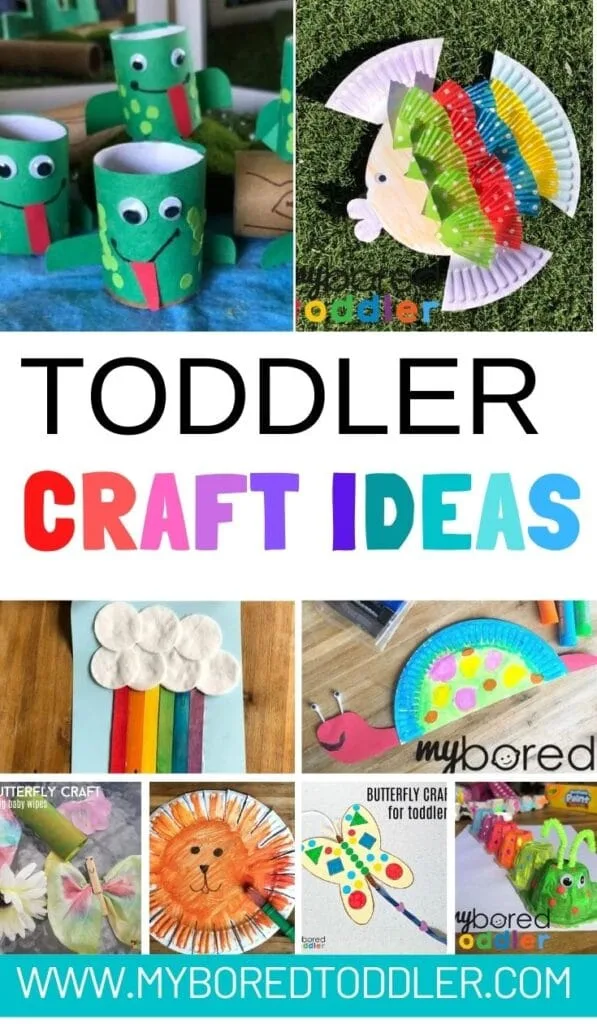
5. Nature Crafts
5.1 Leaf Rubbings
Leaf rubbings are a popular nature craft that allows children to create beautiful and intricate designs using the natural shapes and textures of leaves. All you need is some paper, crayons or colored pencils, and leaves of various sizes and shapes. Place a leaf under the paper and gently rub over it with the side of a crayon or pencil to transfer the texture onto the paper. Children can experiment with different colors and types of leaves to create unique and vibrant leaf rubbings. Leaf rubbing crafts promote observation skills, creativity, and an appreciation for the beauty of nature.
5.2 Pinecone Bird Feeders
Pinecone bird feeders are a wonderful craft that not only allows children to create a beautiful decoration but also provides food for birds in your backyard. Start by collecting pinecones and tying a string or pipe cleaner around the top. Children can then spread peanut butter or vegetable shortening onto the pinecones and roll them in birdseed until fully coated. Hang the pinecone bird feeders outside on a tree branch or a pole, and watch as birds come to enjoy the treats. This nature craft promotes environmental awareness, creativity, and an opportunity to observe and learn about different bird species.
5.3 Rock Painting
Rock painting is a delightful activity that combines creativity with the natural beauty of rocks. Children can collect smooth rocks of various sizes and use acrylic paints or markers to transform them into colorful works of art. They can paint animals, flowers, or even create abstract designs on the rocks. Once dry, the painted rocks can be displayed in the garden, used as paperweights, or hidden in the community for others to find – spreading joy and creativity. Rock painting encourages artistic expression, fine motor skills, and an appreciation for nature’s canvas.
6. Fabric Art
6.1 Tie-Dye T-Shirts
Tie-dye t-shirts are a classic craft that allows children to personalize and create unique garments. With a plain white t-shirt, rubber bands, and fabric dye, kids can create vibrant and eye-catching patterns. They can experiment with different folding and twisting techniques to achieve different designs and color combinations. Tie-dye t-shirts are not only a fun and creative activity but also a chance for children to learn about color theory, fabric absorption, and garment design. It’s a craft that encourages self-expression, individuality, and pride in one’s creations.
6.2 No-Sew Felt Animals
No-sew felt animals are a craft suitable for children of all ages, and they offer a great opportunity for imaginative play. With some felt, scissors, and glue, kids can create their own menagerie of adorable animals. They can cut out different shapes from the felt and use glue to attach them together, creating the body, limbs, and features of the animals. No-sew felt animals can range from simple shapes to more complex designs, depending on the child’s skill level and creativity. This craft promotes fine motor skills, hand-eye coordination, and spatial awareness. It also encourages storytelling and imaginative play.
6.3 Fabric Puppets
Fabric puppets are a wonderful craft that combines fabric art with storytelling and performance. Children can use various fabric scraps, buttons, yarn, and other materials to create their unique puppets. They can sew or glue different pieces together to form the body, head, and limbs of the puppets. Once complete, kids can bring their puppets to life by giving them voices, personalities, and engaging in imaginative play. Fabric puppets promote creativity, storytelling, and fine motor skills. They also encourage children to express themselves through their creations and develop confidence in their own abilities.

7. Science Experiments
7.1 Homemade Volcano
Making a homemade volcano is a classic science experiment that never fails to captivate children’s attention. To create a volcano, all you need is some baking soda, vinegar, dish soap, and a container to build the volcano around. Children can shape the volcano using clay or papier-mâché and create a well in the center for the reaction to occur. When vinegar is poured into the well and mixed with baking soda, it creates a chemical reaction that produces foaming “lava” that flows down the sides of the volcano. This experiment teaches children about chemical reactions, the properties of acids and bases, and the power of gases.
7.2 Rainbow in a Jar
Creating a rainbow in a jar is a colorful and visually stunning science experiment that teaches kids about density and liquid stratification. The experiment requires different liquids with varying densities, such as water, vegetable oil, and colored sugar solutions. By carefully layering the liquids in a clear glass or container, children can create a rainbow-like effect where the liquids do not mix but form distinct layers based on their densities. This experiment helps develop an understanding of density, observation skills, and critical thinking. Plus, it’s a mesmerizing spectacle that children will love to watch.
7.3 Balloon Rocket
The balloon rocket experiment is a thrilling and hands-on way to teach children about the principles of force and motion. All you need is a long string, a straw, a balloon, and tape. Children can thread the string through the straw and secure it tightly at both ends. They then blow up the balloon, pinching the end to prevent air from escaping, and tape the balloon to the straw. When they release the balloon, the air escaping from it propels the balloon rocket along the string. This experiment demonstrates Newton’s Third Law of Motion, where every action has an equal and opposite reaction, and introduces children to concepts of force, thrust, and acceleration in a fun and exciting way.
8. Jewelry Making
8.1 Beaded Bracelets
Beaded bracelets are a popular craft that allows children to create their own unique jewelry. With a variety of beads, elastic cord, and some basic jewelry-making tools like scissors and pliers, kids can design and string together beautiful bracelets. They can experiment with different bead patterns, colors, and sizes to create personalized pieces that reflect their style. Beaded bracelet making promotes fine motor skills, hand-eye coordination, and color recognition. It also encourages creativity, self-expression, and an appreciation for handmade crafts.
8.2 Friendship Necklaces
Friendship necklaces are a meaningful craft that encourages children to express their love and friendship for others. With some string, beads, and pendants, kids can create necklaces that can be exchanged with their friends as a token of their bond. They can choose beads in their favorite colors, spell out their initials, or even add small charms that represent shared interests. Friendship necklaces promote social skills, creativity, and empathy. They are a reminder of the importance of friendship and can serve as cherished keepsakes for years to come.
8.3 Keychain Charms
Keychain charms are small and fun crafts that children can create to personalize their backpacks, belongings, or gift to family and friends. With some shrinkable plastic sheets, markers, and a heat source like an oven or heat gun, kids can draw and color their desired designs on the plastic. After shrinking the plastic in the oven, the drawings shrink and harden into durable plastic charms. Children can attach these charms to keyrings, backpack zippers, or use them as bag tags. Keychain charms promote fine motor skills, creativity, and allow children to showcase their artistic talents in a functional and personalized way.
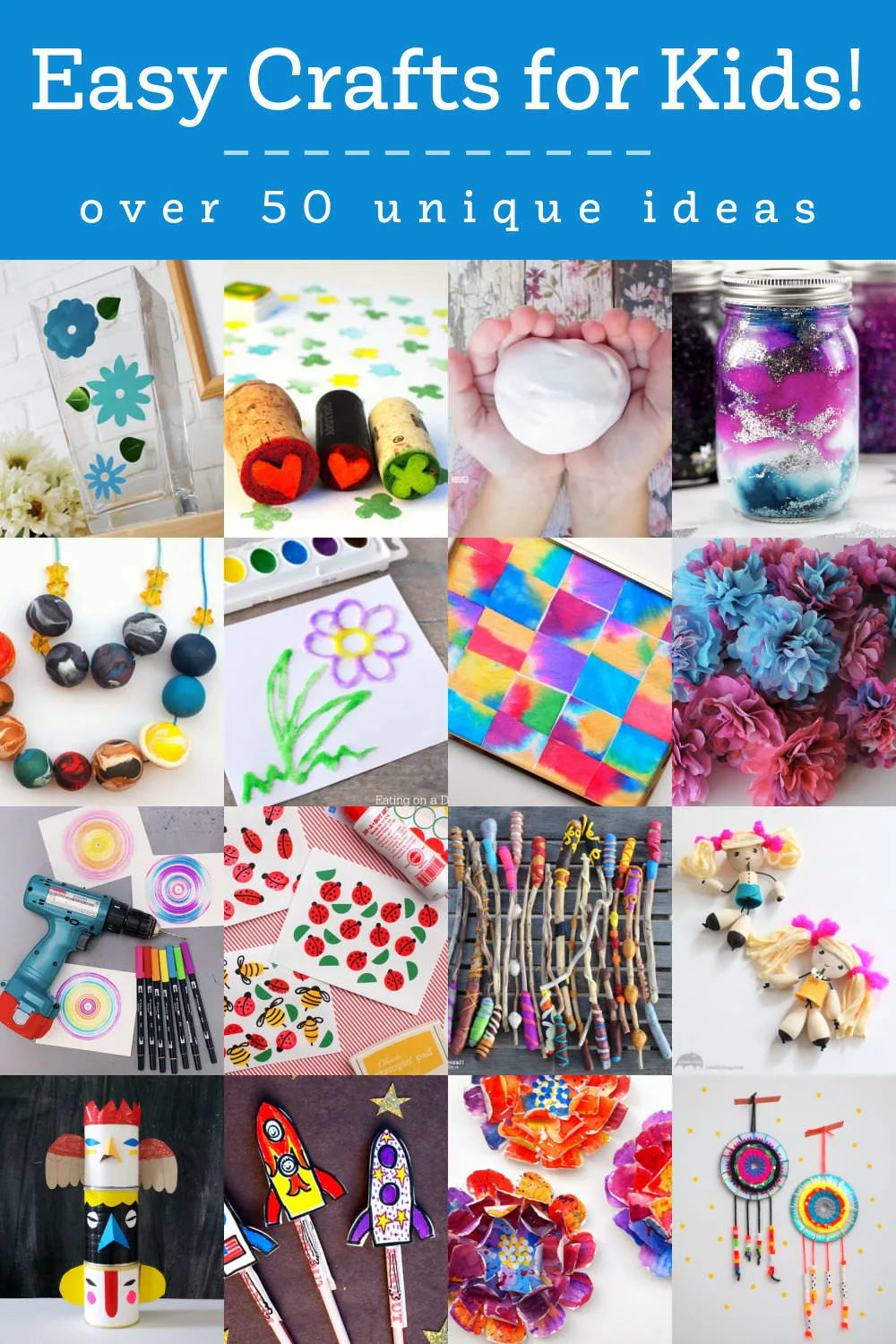
9. Edible Crafts
9.1 Fruit Kabobs
Fruit kabobs are a delicious and healthy edible craft that children can enjoy making and eating. Provide a selection of colorful fruits like strawberries, pineapple chunks, grapes, and melon cubes, along with some wooden skewers. Kids can thread the fruit onto the skewers in any pattern they desire, creating beautiful and nutritious snacks. Fruit kabobs promote fine motor skills, hand-eye coordination, and healthy eating habits. They also offer an opportunity for children to learn about different fruits, their colors, textures, and tastes.
9.2 Cookie Decorating
Cookie decorating is a delightful edible craft that combines baking, creativity, and delicious treats. Children can start by baking a batch of sugar cookies in fun shapes like hearts, stars, or animals. Once cooled, they can unleash their creativity by decorating the cookies using icing, sprinkles, colored sugars, and edible food markers. Cookie decorating is a wonderful way to enhance fine motor skills, hand-eye coordination, and attention to detail. It also allows children to express their imagination and artistic flair in an edible form.
9.3 Veggie Critters
Veggie critters are a fun and imaginative way to encourage children to eat their fruits and vegetables. Provide a variety of colorful vegetables like carrots, cucumbers, cherry tomatoes, and bell peppers, along with small skewers or toothpicks. Kids can transform these vegetables into adorable critters by attaching different pieces together using the skewers. They can create veggie caterpillars, flower bouquets, or even animal faces. Veggie critters promote healthy eating habits, fine motor skills, and creativity. They transform ordinary vegetables into playful and appealing snacks that children will be excited to eat.
10. DIY Musical Instruments
10.1 Tin Can Drums
Tin can drums are a fun and easy DIY musical instrument that allows children to explore rhythm and sound. Simply collect clean and empty tin cans of various sizes, stretch a balloon over the top, and secure it tightly with a rubber band. Children can use their hands or drumsticks to hit the balloon, creating different pitches and tones. They can experiment with rhythm, play along with their favorite songs, or even form a family band. Tin can drums promote rhythm, coordination, and an understanding of cause and effect in music.
10.2 Bottle Xylophone
A bottle xylophone is a simple yet mesmerizing musical instrument that can be created with just a few empty glass bottles and water. Line up the bottles in order from largest to smallest and fill them with varying amounts of water. When tapped with a mallet or spoon, each bottle produces a different pitch, creating a delightful melodic sound. Children can experiment with different amounts of water to create different notes and even try to play simple tunes. Bottle xylophones promote a sense of pitch, rhythm, and an appreciation for the science of sound.
10.3 Rubber Band Guitar
A rubber band guitar is a fantastic DIY instrument that can be made using a shoebox, rubber bands, and a cardboard tube or ruler. Simply stretch the rubber bands across the opening of the shoebox and secure them in place. Children can pluck or strum the rubber bands to create different musical tones. They can experiment with different tensions and lengths of the rubber bands to produce different pitches. Rubber band guitars promote fine motor skills, hand-eye coordination, and an understanding of the concept of sound vibrations.
With all these fun and educational DIY projects, you and your child will never run out of creative and engaging activities to enjoy together. From crafts that explore different materials and textures to experiments that teach scientific principles, each activity offers a unique opportunity for learning and bonding. So gather your supplies, unleash your creativity, and embark on a crafting adventure with your child today!

